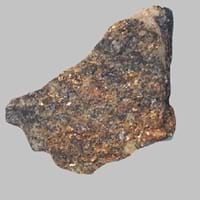Definition
Whiteschist is an uncommon rock type belonging to a class of metamorphic rock, this is formed at high-ultra-high pressures
Adakite is an intermediate to felsic volcanic rock that has geochemical characteristics of magma which is said to be formed by partial melting of altered basalt that is subducted below volcanic arcs
Origin
Tasmania
Adak, Aleutian Islands
Discoverer
Unknown
Defant and Drummond
Etymology
From French schiste, Greek skhistos i.e. split
From Adak, Aleutian Islands
Class
Metamorphic Rocks
Igneous Rocks
Sub-Class
Durable Rock, Soft Rock
Durable Rock, Medium Hardness Rock
Group
Not Applicable
Volcanic
Other Categories
Fine Grained Rock, Medium Grained Rock, Opaque Rock
Fine Grained Rock, Medium Grained Rock, Opaque Rock
Texture
Foliated
Porphyritic
Color
Green, Grey, White
Black, Brown, Light to Dark Grey
Durability
Durable
Durable
Appearance
Banded and Foilated
Dull and Soft
Interior Uses
Decorative Aggregates, Interior Decoration
Decorative Aggregates, Floor Tiles, Homes, Hotels, Kitchens
Exterior Uses
Garden Decoration, Paving Stone
As Building Stone, As Facing Stone, Office Buildings
Other Architectural Uses
Curbing
Whetstones
Construction Industry
for Road Aggregate
As Dimension Stone, Cobblestones, Rail Track Ballast, Roadstone
Medical Industry
Not Available
Not Available
Antiquity Uses
Artifacts, Monuments, Sculpture, Small Figurines
Monuments, Sculpture, Small Figurines
Commercial Uses
Creating Artwork, Gemstone, Jewelry, Production of Lime
Commemorative Tablets, Pottery, Used in aquariums
Types
Not Available
Not Available
Features
High percentage of mica, Host Rock for Lead
Has High structural resistance against erosion and climate, Host rock for Diamond, Very fine grained rock
Archaeological Significance
Famous Monuments
Not Available
Not Available
Famous Sculptures
Not Available
Not Available
Formation
Whiteschist is formed by dynamic metamorphism at high temperatures and pressures that aligns the grains of mica, hornblende and other elongated minerals into thin layers.
Adakite rocks are formed when the hydrous fluids are released from minerals that break down in metamorphosed basalt, and rise into the mantle they initiate partial melting.
Mineral Content
Carbonate, Coesite, Quartz, Silica
Olivine, Plagioclase, Pyroxene
Compound Content
CaO, Mg, MgO, Silicon Dioxide
Aluminium Oxide, MgO, Silicon Dioxide
Types of Metamorphism
Not Applicable
Cataclastic Metamorphism, Contact Metamorphism, Impact Metamorphism, Regional Metamorphism
Types of Weathering
Biological Weathering, Chemical Weathering, Mechanical Weathering
Chemical Weathering, Mechanical Weathering
Types of Erosion
Chemical Erosion, Coastal Erosion, Glacier Erosion
Coastal Erosion, Sea Erosion, Water Erosion
Grain Size
Fine to Medium Grained
Fine to Medium Grained
Fracture
Conchoidal
Conchoidal
Streak
White
Bluish Black
Porosity
Less Porous
Less Porous
Luster
Subvitreous to Dull
Grainy, Pearly and Vitreous
Compressive Strength
Not Available
Cleavage
Perfect
Not Available
Toughness
1
Not Available
Specific Gravity
2.86
Not Available
Transparency
Opaque
Opaque
Density
2.8-2.9 g/cm3
Not Available
Specific Heat Capacity
Not Available
Resistance
Heat Resistant
Heat Resistant, Pressure Resistant, Wear Resistant
Deposits in Eastern Continents
Asia
Afghanistan, Bangladesh, Bhutan, China, India, Japan, Kazakhstan, Malaysia, Pakistan, Russia, Thailand, Turkey, Vietnam
India, Russia
Africa
Egypt, Ethiopia, Morocco, Nigeria, South Africa
Ethiopia, Somalia, South Africa
Europe
Austria, England, France, Georgia, Germany, Italy, Liechtenstein, Monaco, Norway, Slovenia, Spain, Sweden, Switzerland
Iceland
Others
Not Available
Not Available
Deposits in Western Continents
North America
Canada, Costa Rica, Cuba, Mexico, Panama, USA
Canada, USA
South America
Brazil, Colombia, Guyana
Brazil
Deposits in Oceania Continent
Australia
New South Wales, New Zealand, Queensland
Not Available










